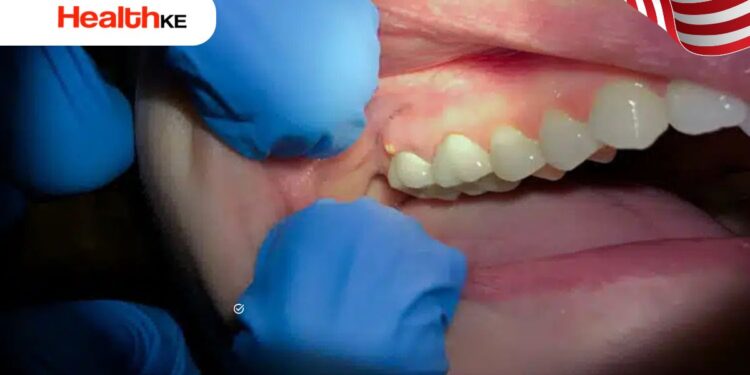How Long Until a Tooth Infection Kills You?
A tooth infection can kill you within days or weeks if left untreated. The timeline varies depending on the infection’s severity, your immune system, and how quickly bacteria spread. Although it’s rare today—thanks to antibiotics and modern dentistry—a dental abscess can still become life-threatening if ignored.
When bacteria from a decayed tooth penetrate deep into the pulp, they multiply and release toxins. These toxins cause inflammation, leading to pus buildup, pressure, and extreme pain. If untreated, this infection may travel through your jaw, bloodstream, or brain, leading to sepsis or meningitis, which can be fatal.
Table of Contents
Understanding Tooth Infections
A tooth infection, also called a dental abscess, happens when bacteria invade the soft tissue or root of the tooth. There are three main types:
- Periapical abscess: Infection at the tip of the tooth root.
- Periodontal abscess: Infection in the gums surrounding the tooth.
- Gingival abscess: Infection confined to the gum surface.
Main Causes
- Untreated tooth decay
- Cracked or broken teeth
- Failed dental work
- Poor oral hygiene
- Smoking or uncontrolled diabetes
Bacterial Behavior
Most infections are caused by Streptococcus and Prevotella bacteria. These thrive in low-oxygen environments like deep cavities. Once they enter the bloodstream, they can reach critical organs.
How a Tooth Infection Spreads in the Body
When bacteria breach the tooth’s protective layers, they infiltrate the pulp chamber, spreading to nearby tissues. The infection moves downward to the jawbone (osteomyelitis), or upward to the sinuses or brain.
Major Spread Pathways:
- Lymphatic system: Carries bacteria to neck and chest.
- Blood vessels: Distribute toxins to vital organs.
- Facial spaces: Allow infection to reach the throat or brain.
If untreated, it can cause Ludwig’s angina, a dangerous swelling under the tongue that blocks airways.
Early Signs of a Tooth Infection
Recognizing early symptoms can save your life. Look for:
- Persistent toothache (throbbing or pulsating)
- Swollen or red gums
- Bad taste or foul odor in the mouth
- Tooth sensitivity
- Swelling in face or jaw
- Fever or fatigue
If these symptoms appear, visit a dentist immediately before the infection escalates.
Dangerous Symptoms That Signal Emergency
When a tooth infection advances, it can cause systemic symptoms such as:
- Difficulty breathing or swallowing
- Severe swelling around the neck or eyes
- Rapid heart rate and dizziness
- High fever and confusion
- Pus discharge and severe pain
These symptoms may indicate sepsis, a body-wide infection that can be fatal within 48 hours without treatment.
Timeline: From Infection to Death
Here’s how fast an untreated tooth infection can turn deadly:
| Timeframe | Progression |
|---|---|
| Day 1–3 | Local pain and swelling, pus formation begins. |
| Day 4–7 | Infection deepens; jaw, ear, or neck pain develops. |
| Week 2–3 | Bacteria may enter bloodstream (bacteremia). |
| Week 3–4+ | Potential for sepsis, brain abscess, or heart infection. |
While this timeline isn’t exact for everyone, once the infection reaches your bloodstream or brain, death can occur in under 10 days.
What Happens in the First 48 Hours
The body reacts by sending white blood cells to the infected area, causing inflammation, pain, and pus. During this period, you may still be able to control the infection with antibiotics and drainage. But if it’s ignored, bacteria can enter nearby veins leading to the cavernous sinus—a vital brain area.
When It Reaches the Bloodstream
Once bacteria reach your blood, your body enters septic shock, a severe inflammatory response causing:
- Organ failure (lungs, kidneys, liver)
- Low blood pressure
- Confusion and unconsciousness
- Death within hours
That’s why immediate dental or medical care is critical when you notice symptoms spreading beyond your mouth.
Factors That Affect How Fast a Tooth Infection Can Kill You
| Factor | Impact |
|---|---|
| Immune strength | Weaker immunity → faster spread |
| Age | Elderly patients more vulnerable |
| Chronic illness | Diabetes, cancer, or HIV slow healing |
| Lifestyle habits | Smoking or poor nutrition worsen infection |
| Delay in treatment | The longer you wait, the deadlier it becomes |
Even healthy individuals can face serious risks if the infection involves the maxillary sinus or brain.
Treatment Options and Recovery
A dental abscess won’t heal on its own — professional treatment is mandatory.
Common Procedures:
- Antibiotics – Kill bacterial infection
- Root Canal – Removes infected pulp
- Tooth Extraction – Eliminates infection source
- Drainage Procedure – Releases pus and reduces pressure
Most people recover within 1–2 weeks of treatment, but untreated cases can cause lifelong complications.
Emergency Dental Interventions
If swelling spreads to your jaw or throat, you’ll need emergency care, including:
- Hospitalization for IV antibiotics
- Surgical drainage
- Intubation (in severe airway obstruction)
- Blood tests and imaging to monitor sepsis
Never rely solely on home remedies or over-the-counter painkillers — they only mask symptoms.
How to Prevent Tooth Infections
Prevention is easier and cheaper than treatment:
- Brush twice daily with fluoride toothpaste
- Floss regularly
- Avoid sugary foods
- Visit the dentist every 6 months
- Replace fillings or crowns when damaged
- Quit smoking
Even simple habits like rinsing with salt water after meals can reduce bacterial buildup.


 Home
Home










